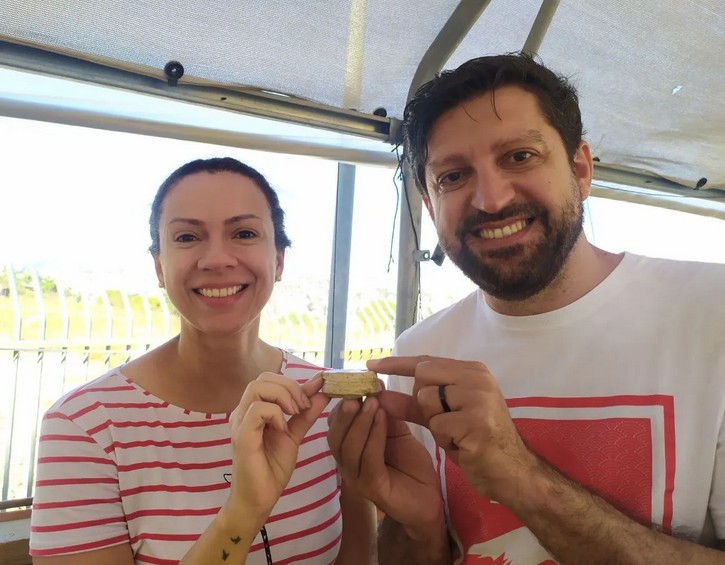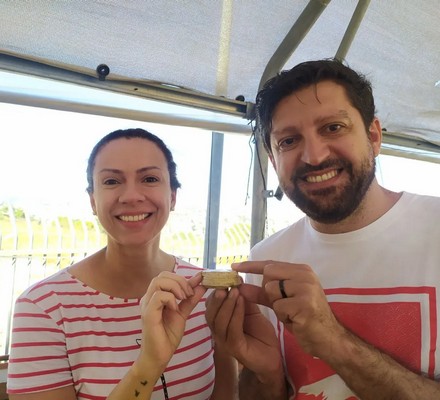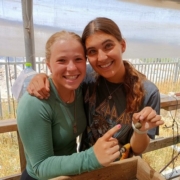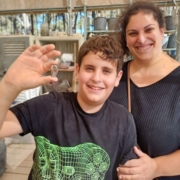Find and Finders of the Month: André and Daniela Lopes Found a Piece of a Stone Vessel

When we heard about the Temple Mount Sifting Project months before we planned our trip to Israel, we made sure to plan our participation. Being able to have the experience of touching such ancient and sacred materials was a unique opportunity! In our first bucket we found this piece so beautiful, it made us feel connected to this magical and special place for humanity. It was a great pleasure to participate!
So what exactly is this beautiful piece? First, some background:
About a century before the destruction of the Second Temple, something drastic changed in the material culture of the area. Suddenly, stone vessels became popular throughout the Land of Israel. Nothing strange about that – people have always known that some activities require massive stone vessels, and there are some beautiful vessels made out of materials such as marble or alabaster. But why would someone make regular, everyday bowls and jugs out of chalk, when wood, or pottery, which has been around for several millennia, would be both easier to manufacture and more comfortable to use?
Chalk vessels started during the Hasmonean period, about two centuries before the destruction of the temple, but only became truly popular at the eve of the Second Temple period. At the time, “purity had spread” (Tosefta Shabbat 1:14) more and more thought and effort was put into the avoidance of ritual impurity (tum’ah). Stone vessels, which Halachic ruling deemed immune became truly widespread wherever a Jewish population was present. Today, when an archeologists discover
a new site from this period and ask themselves if the people who populated the site were Jewish, Samaritan or pagan, will look first of all for the presence of chalkstone vessels.
The purity of these stone vessels was doubly useful – both for a person who became impure and wanted to avoid imparting that impurity on his household items, and also for cases in which an extra layer of purity was called for – be it special times, places, or regarding specific holy items. One such case was the high priest, who the Talmud (B. Yoma 2a) dictated that prior to preparing the Red Heifer, would be quarantined on the temple mount, using only dung, stone and earth vessels.
In the month of July, at least three of our visitors found fragments of stone vessels.
André and Daniela Rosa Lopes (quoted above) found the base of a large stone vessel (or possibly, the top of a lid). Two other visitors also found fragments of stone vessels: one is the handle of a mug, and the other was a rim of a small bowl.
Unfortunately, we don’t have the names of the discoverers of these artifacts! So, if you’re reading this and the items look familiar, let us know!
Discover more from The Temple Mount Sifting Project
Subscribe to get the latest posts sent to your email.












Leave a Reply
Want to join the discussion?Feel free to contribute!